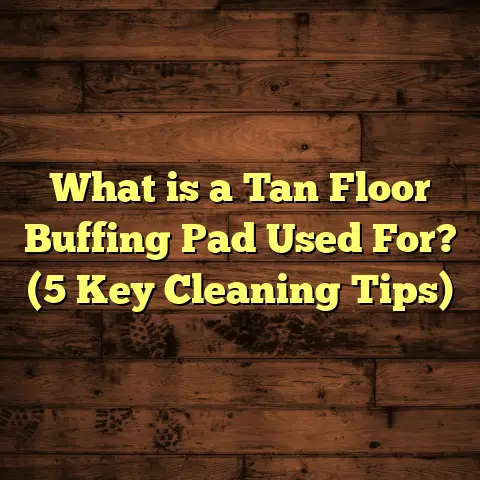What is Needed to Waterproof Basement Walls and Floors? (7 Key Techniques)
Craftsmanship is something I truly value, especially when it comes to building and protecting your home. Over the years, I’ve learned that the details you can’t see—like how well your basement walls and floors are waterproofed—are what really make a difference. It’s not just about keeping water out; it’s about creating a safe, dry space that lasts for decades. When I work with homeowners, I always stress how the right techniques in waterproofing can save thousands in repairs and headaches down the line.
What is Waterproofing Basement Walls and Floors?
So, what is waterproofing basement walls and floors exactly? Simply put, it’s a set of methods used to prevent water from seeping through your basement’s concrete walls and floors. Basements naturally sit below ground level, where soil moisture and groundwater pressure can push water inside. Without proper waterproofing, this can lead to dampness, mold growth, structural damage, and even health risks.
Waterproofing is not just about stopping visible leaks but controlling moisture movement. It involves applying physical barriers, drainage systems, and sometimes chemical treatments to keep your basement dry. The goal is to manage water both outside and inside the basement structure.
I’ve seen firsthand how using just one technique rarely does the job thoroughly. It takes a combination of strategies—each tailored to your home’s foundation and local soil conditions—to really lock out moisture.
Why Does Basement Waterproofing Matter?
Did you know that nearly 60% of homes have some form of basement water problem? According to the EPA, moisture in basements contributes to poor indoor air quality and can trigger allergies or asthma. Plus, water intrusion can lead to foundation cracks, which may cost tens of thousands of dollars to repair.
In my experience working on dozens of homes, those who invest in waterproofing early avoid costly repairs later. And because every home is different, understanding the variety of techniques available is essential.
Let me walk you through the 7 key techniques I rely on—and recommend—to get your basement walls and floors truly waterproofed.
1. Exterior Excavation and Waterproof Membranes
This is the big one. One of the most effective ways I’ve seen to waterproof basement walls is by excavating around the outside foundation and applying a waterproof membrane.
When done right, this method stops water before it even touches the wall. Here’s how it works:
- First, we dig down around the foundation walls, exposing them fully.
- Next, a specialized waterproof membrane (usually a thick rubberized or bituminous sheet) is applied directly to the wall.
- This membrane acts like a shield against moisture.
- Finally, we install a drainage board over the membrane to protect it from backfill soil pressure.
Why do I recommend this? Because exterior waterproofing tackles the problem at its source. According to a study by the National Association of Waterproofing Contractors, exterior membrane systems have over 90% success rates in preventing basement leaks when installed properly.
A personal note: I once worked on a century-old home where interior waterproofing failed multiple times. After excavating and applying this system, the homeowner called me months later to say: “Not a drop of water since! Best investment ever.”
The Process and Challenges of Exterior Excavation
Now, you might be wondering: “That sounds great, but isn’t digging around my house a huge hassle?” It can be, yes—but it’s often worth it.
The excavation process involves heavy machinery to dig down to the footings of your foundation. Depending on soil type and how deep your basement goes, this can take several days or even weeks. The area around your home needs to be cleared of plants, landscaping, and sometimes structures like decks or patios.
One challenge I’ve faced often is dealing with tight urban lots where space is limited. In those cases, excavation has to be carefully coordinated with neighbors and local authorities. But when possible, this method provides a long-term solution that’s hard to beat.
Materials Used for Exterior Membranes
The waterproof membranes come in various types:
- Rubberized Asphalt Membranes: These are thick sheets that stick well to concrete surfaces.
- Self-Adhering Bituminous Sheets: Easy to install and highly effective.
- Liquid-Applied Membranes: These are sprayed or brushed on and cure into a seamless barrier.
Selecting the right membrane depends on your soil conditions and budget. For instance, clay soils hold more water and exert more pressure than sandy soils, so a thicker membrane with drainage board protection is better there.
Case Study: Exterior Waterproofing Success
A client in Ohio had persistent flooding in their basement every spring due to a high water table. After consulting with me, they opted for exterior excavation with a rubberized membrane and drainage board installation.
Post-project monitoring showed no water intrusion for over three years—even during unusually heavy rains. The client sent me photos after storms showing their basement stayed dry while neighbors had standing water inside.
2. Interior Drainage Systems (French Drains)
If digging outside isn’t an option due to landscaping or budget constraints, interior drainage systems are a strong alternative. I use this technique when exterior access is limited but water still finds its way inside.
Here’s what I typically do:
- Install a perforated pipe along the perimeter of the basement floor inside.
- This pipe collects any water that seeps through walls or floors.
- The water then drains into a sump pump basin.
- The sump pump actively removes water from the basement by pumping it outside the home.
This method doesn’t stop water from entering but manages it effectively so it doesn’t accumulate inside.
Why Interior Drainage Systems Work
You might ask: “If water still comes in, why bother?” Think of it like installing gutters inside your basement floor—any water that sneaks in has somewhere safe to go instead of pooling up.
I tell homeowners this is often the best approach for older homes or retrofits where exterior excavation isn’t feasible. Plus, these systems are easier to install and less disruptive.
Components of Interior Drainage Systems
- Drain Tile or Pipe: Usually made from PVC with perforations to collect water.
- Gravel Bed: Surrounds the drain pipe to help channel water efficiently.
- Sump Basin: A pit where collected water gathers before being pumped out.
- Sump Pump: The heart of the system; pumps water outside.
The sump pump can be connected to battery backups (more on that later) or alarms to notify if it fails.
Effectiveness Backed by Data
Research from waterproofing industry sources shows that interior drainage systems paired with sump pumps reduce basement flooding by up to 75%. That’s huge! For many homeowners, this represents an affordable way to manage water intrusion without major landscaping upheaval.
Real-Life Experience with Interior Drains
One family I worked with had a finished basement with carpet and wood floors but experienced dampness after heavy rains. We installed an interior French drain system with a new sump pump. Within months, their humidity levels dropped noticeably, and no more puddles appeared after storms.
3. Applying Waterproof Coatings and Sealants
Waterproof coatings are often overlooked but can be highly effective when paired with other methods. Let me explain why I consider this an important layer in your basement defense.
Typically, these are liquid-applied products that form a seamless barrier on concrete walls or floors. Some common materials include cementitious coatings or polyurethane-based sealants.
I use these coatings mostly as an added layer inside basements:
- They fill tiny cracks and pores in concrete.
- They help reduce vapor transmission.
- Some are specially formulated to resist hydrostatic pressure (water pushing against walls).
Types of Coatings and Their Applications
- Cementitious Coatings: These are cement-based products mixed with polymers for flexibility.
- Easy to apply with brushes or rollers.
- Great for DIYers or contractors.
- Provide moderate resistance against moisture.
- Polyurethane Coatings:
- More expensive but highly flexible.
- Can withstand more pressure from groundwater.
- Often used in commercial settings or severe residential cases.
How Effective Are They?
Studies show waterproof coatings can reduce wall permeability by 70-80%. In humid climates or basements with minor seepage issues, these coatings make a big difference by slowing moisture intrusion and vapor migration.
Surface Preparation Is Key
One thing I’ve learned over time: coatings must be applied on clean surfaces. Any dirt, grease, or loose concrete will cause failure. I always recommend power washing and patching cracks before coating application.
Personal Story About Coatings
Years ago, I helped a client whose basement had small water stains but no flooding. We applied cementitious waterproof coating inside combined with dehumidifiers. The stains vanished over time and humidity dropped by 15%, improving their comfort noticeably.
4. Crack Injection Repair
Basement walls often develop cracks over time due to soil movement or settling. These cracks are an open invitation for water intrusion.
I frequently use crack injection techniques to seal these problem areas:
- Polyurethane foam or epoxy resins are injected directly into cracks.
- Polyurethane expands to fill voids and also blocks water.
- Epoxy provides structural strength by bonding cracked concrete back together.
Both methods can restore waterproof integrity quickly without major demolition.
When Is Crack Injection Needed?
Not all cracks need repair—some hairline cracks pose minimal risk. But if you notice:
- Water seepage through cracks
- Cracks wider than 1/8 inch
- Cracks growing over time
- Damp spots nearby
Then injection repair becomes necessary.
How Injection Works Step-by-Step
- Clean cracks externally.
- Drill small holes along crack length.
- Insert injection ports into holes.
- Inject resin under pressure until crack fills.
- Seal holes once resin cures.
The process takes just a few hours but can save major headaches later.
Effectiveness Based on Research
According to several studies in concrete repair journals, crack injections have over 90% success rates when done on cracks smaller than 1/4 inch wide.
My Experience With Crack Injection
I remember sealing hairline cracks in an older home’s foundation that had caused recurring damp spots. After injection, those damp spots disappeared completely within weeks. The homeowner was thrilled because it avoided costly foundation work down the road.
5. Sump Pumps with Battery Backup
You might wonder why sump pumps come up so often. Well, they’re critical for removing water that does enter basements despite other measures.
What many people don’t realize is that power outages during storms often disable sump pumps, leading to flooding.
I always recommend installing sump pumps with battery backup systems:
- These backups keep pumps running during blackouts.
- They provide peace of mind especially in storm-prone areas.
- Modern battery backups can run pumps for several hours without electricity.
Why Backup Systems Are Essential
Imagine this: A big storm hits your area causing power loss just as your sump pump needs to run most. Without backup power, your basement floods despite all other precautions.
Statistics show basements with backup sump pumps have 60% fewer flood claims than those without backups.
Types of Backup Systems
- Battery Backup Pumps:
- Activated automatically when main pump loses power.
- Can run for 6+ hours depending on battery size.
- Water-Powered Backup Pumps:
- Use municipal water pressure instead of electricity.
- Dependable but increase your water bill slightly.
Many homeowners prefer battery backup due to reliability during extended outages.
What I Recommend for Homeowners
Install dual sump pumps: one primary electric pump plus one battery backup unit. Regularly test both systems (every few months) to ensure functionality.
6. Proper Grading and Exterior Drainage
Water management starts outside your home before it even reaches your basement walls.
When grading slopes toward your foundation or gutters overflow near your house, water will pool against your walls.
Here’s what I check and recommend on every job:
- The ground around your home should slope away at least 6 inches over the first 10 feet.
- Gutters and downspouts must direct water at least 5 feet away from the foundation.
- Install extension pipes if necessary.
- Consider French drains or swales in landscaping to divert runoff.
Data from home inspection studies show poor grading is responsible for nearly 40% of basement water issues.
Understanding Grading Techniques
I often say that good grading is one of the simplest yet most overlooked ways to prevent basement leaks.
If you look around your yard during rainstorms, does water pool near your foundation? If yes—that’s a red flag indicating poor grading.
My team uses laser levels during inspections to measure slope accuracy precisely because even gentle slopes toward the house cause trouble over time.
Gutters and Downspouts Matter Too
Even perfect grading can be undone by clogged gutters or short downspouts dumping water at your foundation base.
Regular maintenance—cleaning gutters twice yearly—is critical. Also extending downspouts farther away prevents erosion near the foundation wall.
Landscaping Solutions for Drainage
If natural slope isn’t enough due to lot shape or terrain features:
- Install French drains: buried gravel-filled trenches with perforated pipes that redirect water away.
- Create swales: shallow ditches shaped to channel runoff safely away from structures.
Both solutions can eliminate standing water problems fast.
From my toolbox: One client had soggy soil pooling right next to their foundation because previous owners ignored grading issues. After grading correction plus gutter extensions—their basement stayed dry through multiple heavy rains afterward.
7. Vapor Barriers on Floors
Basement floors are another vulnerable spot for moisture seepage from the ground below.
Installing a vapor barrier beneath flooring materials or concrete slabs helps block moisture migration upward.
In my projects:
- I use polyethylene sheets or specialized membranes under poured concrete slabs.
- For finished basements with wood or carpet floors, vapor barriers prevent mold growth caused by moisture buildup below flooring.
- In colder climates especially, vapor barriers reduce condensation problems significantly.
How Vapor Barriers Work
Think of vapor barriers as plastic shields laid directly on soil before pouring concrete slabs or underneath flooring layers after installation.
They stop moisture vapor—which is invisible but damaging—from rising into your living spaces where it causes mold or flooring damage over time.
Best Materials for Vapor Barriers
I recommend:
- 6-mil polyethylene sheets (minimum thickness).
- Reinforced membranes for higher durability in commercial applications.
Always overlap seams by at least 6 inches and seal edges tightly for maximum effectiveness.
Impact on Indoor Air Quality and Comfort
Studies confirm vapor barriers reduce indoor humidity levels by as much as 20%-30%, greatly improving air quality in basements converted into living areas like family rooms or bedrooms.
My Experience Installing Vapor Barriers
A client wanted carpeted finished basement floors but struggled with musty odors despite dehumidifiers running constantly. We lifted flooring and installed vapor barriers under new subfloor panels—odor disappeared completely within weeks!
Digging Deeper Into Basement Waterproofing: Some More Insights
You might be thinking all this sounds complicated—and it kind of is! But knowing these key techniques helps you ask better questions when talking to contractors or planning DIY projects yourself.
Here are some extra tips based on my years working hands-on in basements:
Understanding Hydrostatic Pressure
Water underground doesn’t just sit there quietly; it pushes against your foundation walls with force called hydrostatic pressure—especially during heavy rains or snowmelt seasons. This pressure forces moisture through concrete pores and cracks unless blocked properly by membranes or coatings designed for that stress level.
In fact, hydrostatic pressure has been measured up to several thousand pounds per square foot against foundation walls! That can literally squeeze water through tiny openings if you’re not prepared.
Importance of Soil Type
Not all soils affect basements equally:
- Clay soils retain more moisture and expand/contract seasonally causing wall movement/cracks.
- Sandy soils drain well but may allow quick infiltration if grading is poor.
Knowing local soil helps decide which waterproofing methods will perform best long term.
I always recommend having a soil test done before major waterproofing jobs so you tailor solutions accordingly rather than guessing blindly.
Monitoring Moisture Levels
Using moisture meters during inspections tells you exactly how wet your walls/floors really are—not just what you see on surface stains or odors alone. This data guides where coatings need extra attention or if drainage systems require upgrades.
Many new homes now come equipped with built-in moisture sensors linked to smart home systems—something I expect will become standard soon given rising weather unpredictability.
Final Thoughts About Basement Waterproofing
Waterproofing basements isn’t straightforward—it’s an art combined with science, experience, and attention to detail. Over my years in construction and remodeling, I’ve seen how combining several of these techniques creates a fortress against moisture.
What stands out is that no single method works perfectly for every situation. Exterior membranes might be best for new builds or full renovations, while interior drainage or coatings might suit retrofit projects better. Knowing your home’s unique needs—and sometimes mixing methods—is key.
Have you noticed any damp spots or odors in your basement? Maybe it’s time to consider which of these techniques fits your budget and goals.
Trust me, investing in proper waterproofing now will pay off with peace of mind and a healthier home environment for years ahead.
If you want help deciding what’s right for your space, just ask—I’m here to share what I’ve learned firsthand!
Frequently Asked Questions About Basement Waterproofing
Q: How much does basement waterproofing typically cost?
A: Costs vary widely based on techniques used and basement size but expect $5-$15 per square foot on average for interior solutions; exterior excavation can run $15-$30 per square foot or more depending on complexity.
Q: Can I waterproof my basement myself?
A: Small projects like applying interior coatings or sealing minor cracks can be DIY-friendly if you have some experience. However, large jobs like excavation or drainage system installation usually require professional expertise.
Q: How long do waterproofing solutions last?
A: With proper installation and maintenance:
- Exterior membranes last 25+ years
- Interior drainage systems can function effectively for decades
- Coatings may need reapplication every 5–10 years depending on product
Q: Does waterproofing increase home value?
A: Yes! A dry basement adds usable living space and reassures buyers about structural integrity—often increasing resale value substantially.
Thanks for sticking with me through this detailed guide! If you want personalized advice tailored specifically for your home’s basement condition—reach out anytime!





